Plot summary
"A Letter from the Clearys" starts with Lynn, a young teenage girl, and her dog making their way home through the countryside after a visit to the town's post office.
The narrator is living with her parents, older brother and a neighbour. She feels somewhat neglected as her family are very busy building a greenhouse. In addition, while calling her dog she contrasts him with her previous dog. When Lynn arrives home she reveals that she has found a letter from their friends, the Clearys. This family was due to have visited them 'before' but never came and they had always wondered why, wondering if a letter had been delivered to another family's postbox. The family is somewhat reluctant to hear the letter read but Lynn reads it out anyway.
As Mrs. Cleary asks for news about the family, the letter reveals that the older brother had been married and had a child, and also that the Clearys would have to postpone their planned visit until the next month.
This ordinary cheerful letter upsets the family greatly and Lynn states that this is not her fault, she simply found the letter.
It is now revealed that the family are hiding from looters in the aftermath of a nuclear war, which happened two years earlier. The missing family members had been on a day trip to one of the many places totally destroyed in the war, while the remaining family members are desperately trying to survive a nuclear winter (hence the importance of the greenhouse) and any starving looters. After one such attack the father's fear of returning looters led to his shooting at his daughter and killing her previous dog.
As the story closes the father is boarding up the abandoned post office as they cannot bear the possibility of finding another long-lost letter and any further reminder of how much they have lost. Lynn now reveals to the reader that, far from accidentally stumbling across the letter, she had been searching for it ever since 'it' happened. The letter had indeed been placed in the wrong postbox.
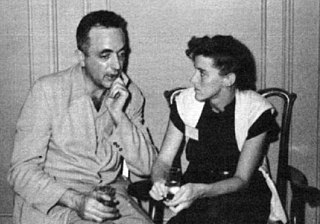
Katherine Anne MacLean was an American science fiction author best known for her short fiction of the 1950s which examined the impact of technological advances on individuals and society.
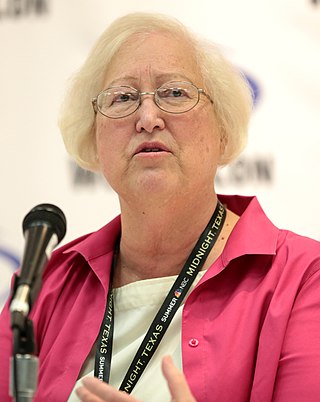
Constance Elaine Trimmer Willis, commonly known as Connie Willis, is an American science fiction and fantasy writer. She has won eleven Hugo Awards and seven Nebula Awards for particular works—more major SF awards than any other writer—most recently the "Best Novel" Hugo and Nebula Awards for Blackout/All Clear (2010). She was inducted by the Science Fiction Hall of Fame in 2009 and the Science Fiction Writers of America named her its 28th SFWA Grand Master in 2011.

Z for Zachariah is a post-apocalyptic science-fiction novel by Robert C. O'Brien that was published posthumously in 1974. The name Robert C. O'Brien was the pen name used by Robert Leslie Conly. After the author's death in March 1973, his wife Sally M. Conly and daughter Jane Leslie Conly completed the work, guided by his notes. Set in the continental territory of the United States, it is written from the first-person perspective as the diary of sixteen-year-old Ann Burden. Burden has survived nuclear war and nerve gas by living in a small valley with an isolated microclimate.
"Even the Queen" is a science fiction short story by Connie Willis, exploring the long-term cultural effects of scientific control of menstruation. It was originally published in 1992 in Asimov's Science Fiction, and appears in Willis' short-story collection Impossible Things (1994) and The Best of Connie Willis (2013), as well as in the audio-book Even the Queen and Other Short Stories (1996).

Fire Watch is a book of short stories by Connie Willis, first published in 1984, that touches on time travel, nuclear war, the end of the world, and cornball humour.
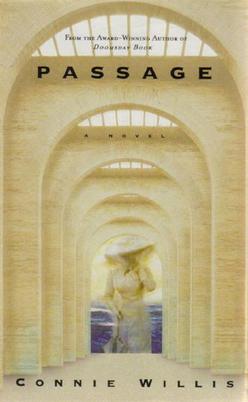
Passage is a science fiction novel by Connie Willis, published in 2001. The novel won the Locus Award for Best Novel in 2002, was shortlisted for the Nebula Award in 2001, and received nominations for the Hugo, Campbell, and Clarke Awards in 2002.
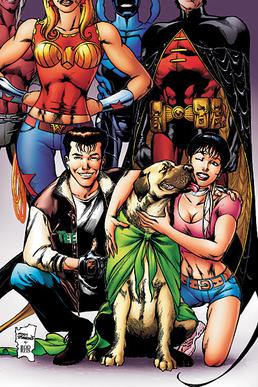
Wendy Harris, Marvin White and Wonder Dog are fictional characters from the 1973 American animated TV series Super Friends, based on the famous superheroes published by DC Comics. The series featured a lineup of DC's most popular characters, including Superman, Batman and Wonder Woman, but Hanna-Barbera, the show's producers, wanted to include young sidekick characters that the children in the audience could identify with. This led to the creation of Wendy, Marvin and their hero pet Wonder Dog, who appeared alongside their more famous friends. Because of the success of the Super Friends cartoon, a Super Friends comic book was also created, in which the trio made their first comics appearance.

Clare Winger Harris was a pioneering science fiction writer whose short stories were published during the 1920s. She is credited as the first woman to publish stories under her own name in science fiction magazines. Harris began publishing stories in 1926 and soon became popular with readers, with most of her fiction appearing in the influential magazine Amazing Stories. She published a total of twelve stories, all but one of which were collected in 1947 as Away From the Here and Now; a full collection was not published until 2019 when The Artificial Man and Other Stories appeared. Her stories, which often feature strong female characters, have been reprinted in anthologies such as Library of America's The Future Is Female! 25 Classic Science Fiction Stories by Women and Wesleyan University Press's Sisters of Tomorrow: The First Women of Science Fiction.

Gertrude Barrows Bennett, known by the pseudonym Francis Stevens, was a pioneering American author of fantasy and science fiction. Bennett wrote a number of fantasies between 1917 and 1923 and has been called "the woman who invented dark fantasy".
"The Last of the Winnebagos" is a short story written by American writer Connie Willis. It was first published in Asimov's Science Fiction Magazine in 1988, and reprinted in the short story collections Impossible Things (1994) and The Best of Connie Willis (2013).
"Fire Watch" is a science fiction novelette by American writer Connie Willis. The story, first published in Isaac Asimov's Science Fiction Magazine in February 1982, involves a time-traveling historian who goes back to the Blitz in London, to participate in the fire lookout at St Paul's Cathedral.

The Nebula Awards #18 is an anthology of science fiction short works edited by American writer Robert Silverberg. It was first published in hardcover by Arbor House in October 1983; a paperback edition with cover art by Gary LoSasso was issued by Bantam Books in September 1984.
Cynthia Felice is an American science fiction writer. She is best known for her complex, carefully plotted stories and expansive universes.

Blackout and All Clear are the two volumes that constitute a 2010 science fiction novel by American author Connie Willis. Blackout was published February 2, 2010 by Spectra. The second part, the conclusion All Clear, was released as a separate book on October 19, 2010. The diptych won the 2010 Nebula Award for Best Novel, the 2011 Locus Award for Best Science Fiction Novel, and the 2011 Hugo Award for Best Novel. These two volumes are the most recent of four books and a short story that Willis has written involving time travel from Oxford during the mid-21st century, all of which won multiple awards.

The 1983 Annual World's Best SF is an anthology of science fiction short stories edited by Donald A. Wollheim and Arthur W. Saha, the twelfth volume in a series of nineteen. It was first published in paperback by DAW Books in May 1983, followed by a hardcover edition issued in September of the same year by the same publisher as a selection of the Science Fiction Book Club. For the hardcover edition the original cover art was replaced by a new cover painting by Richard Powers.
Charles Hornig was one of the earliest contributors to the science fiction genre. He not only created one of the first fanzines in 1933, as a teenager, he became the managing editor for Wonder Stories magazine from November, 1933 to April, 1936.
"The Soul Selects Her Own Society: Invasion and Repulsion: A Chronological Reinterpretation of Two of Emily Dickinson's Poems: A Wellsian Perspective" is a 1996 science fiction short story by Connie Willis. It was first published in Asimov's Science Fiction in April 1996, but written for the anthology War of the Worlds: Global Dispatches, in which it was published in June 1996; it was subsequently republished in War of the Worlds: Fresh Perspectives on the H. G. Wells Classic (2005), in This is My Funniest: Leading Science Fiction Writers Present Their Funniest Stories Ever (2006), in The Winds of Marble Arch and Other Stories (2007), and in The Best of Connie Willis: Award-Winning Stories (2013).
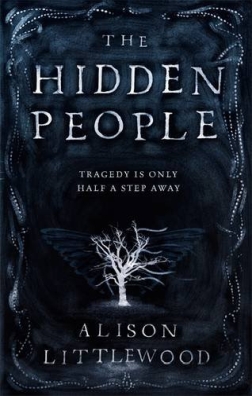
The Hidden People is a historical fantasy and horror novel by English writer Alison Littlewood, first published in October 2016 in the United Kingdom by Jo Fletcher Books. It is based on the 1895 incident in County Tipperary, Ireland, where Bridget Cleary was burnt alive by her husband, who believed she was a fairy changeling.

The Rift is a 2017 science fiction and literary fiction novel by English writer Nina Allan. It was first published in July 2017 in the United Kingdom as a trade paperback by Titan Books. It is the second book of a two-book deal Allan signed with Titan in 2015; the first is the second edition of her debut novel, The Race, published in 2016.

The Pier Falls is the first short story collection by Mark Haddon published in 2016 and contains nine stories generally disturbing and dark. Mark Haddon is best known for his prize-winning first novel The Curious Incident of the Dog in the Night-Time.













